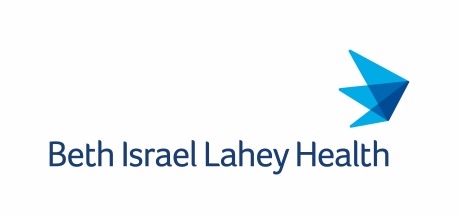Newswise — BOSTON – Every year, nearly 11,000 Americans die of acute myeloid leukemia (AML), a blood cancer that affects mainly older adults. While most patients initially respond to chemotherapy, more than half of those who respond will eventually relapse as the cancer cells develop resistance to treatment. In a new paper published today in Cell Research, a team of scientists led by Pier Paolo Pandolfi, MD, PhD, Director of the Cancer Center and Cancer Research Institute at Beth Israel Deaconess Medical Center, reveal vulnerabilities in a subset of AML that could serve as the foothold researchers need to overcome resistance to therapy.
“There is an acute need to develop rational combinations to treat disease and overcome resistance that arises in response to therapy,” said Pandolfi. “By providing a critical understanding of the mechanisms underlying the disease, we identified a therapeutic strategy for treatment of this type of AML.”
About 20 percent of AML cases involve a mutation in a key metabolic enzyme called IDH. Using a previously published genetically engineered mouse model as well as human cell line in vitro and in vivo models for AML with this mutation, Pandolfi and colleagues identified key processes these cancer cells use to develop – or evolve – drug resistance in response to therapies.
By following the pathway to resistance in a step-by-step manner, the scientists – including first author Vera Mugoni, PhD, a postdoctoral research fellow in the Pandolfi lab – identified critical vulnerabilities that researchers can potentially exploit for therapeutic benefit in all stages of the disease’s evolution. Moreover, the team demonstrated that a combination of drugs already in use for treatment of another type of leukemia worked equally as well against this form of AML in both an in vitro and in vivo setting.
“The molecular processes that are frequently required to promote resistance to therapy leave tumors vulnerable in other areas,” said Mugoni. “In the case of AML with mutation to IDH enzymes, both metabolism and differentiation pathways were altered, exposing vulnerabilities that become exacerbated as the leukemia evolves, and for which we already have approved agents that can be utilized.”
Another form of leukemia known as acute promyelocytic leukemia (APL) was once a fatal diagnosis. It is now considered a curable disease, thanks to researchers including Pandolfi, who demonstrated that arsenic trioxide (ATO) was effective against APL in combination with another drug called all-trans retinoic acid (ATRA). In the current study, Pandolfi and colleagues tested the combination in both the mouse model of AML with IDH mutation and in human AML cells. They determined that, while the drugs target different vulnerabilities in the different forms of leukemia, the combination proved “powerfully and exquisitely effective” against this subset of AML.
“With my lab’s previous discovery that all-trans retinoic acid and arsenic trioxide is curative in the treatment of acute promyelocytic leukemia (APL), witnessing the translation of this same therapy to possible therapeutic approaches for other forms of AML is extremely rewarding,” said Pandolfi.
Pandolfi adds his team is currently working to develop clinical trials to evaluate the ATRA and ATO combination for treatment of AML with mutation in IDH enzymes at multiple centers throughout the United States and beyond.
In addition to Pandolfi and Mugoni, authors include Riccardo Panella, Giulia Cheloni, Ming Chen, Dina Stroopinsky, Jlenia Guarino, Emanuele Monteleone, Jonathan David Lee, Lourdes Mendez, Archita Venugopal Menon, David Avigan, Letizia Longo and John Gerard Clohessy, of the Cancer Research Institute at BIDMC; Olga Pozdnyakova and Andrew A. Lane of Brigham and Women’s Hospital; Jon Christopher Aster, Richard Maury Stone and Ilene Galinsky of Dana-Farber Cancer Institute; Jose Cervera Zamora of Biobanco La Fe – Instituto de Investigation Sanitaria La Fe (IIS-LA FE); Francesco Lo-Coco of the University of Rome; and Manoj Kumar Bhasin, of the Division of IMBIO, Department of Medicine, BIDMC Genomics, Proteomics, Bioinformatics and Systems Biology Center at Harvard Medical School and BIDMC.
This work was supported by EMBO Long Term post-doctoral fellowship (ALTF 1011-2014); European Commission (LTFCOFUND2013, GA-20130609409); the Leukemia and Lymphoma Society (career Development Program, Grant number: 5437-16); the Marie Curie Action Fellowship “Mobility Program for post graduated scientists in the Life Sciences” (C.I. 130011240012025124540); the Societa Italiana di Biofisica e Biologia Molecolare (SIBBM); the Ludwig Center at Harvard; and National Institutes of Health/National Cancer Institute grants R35CA197529 and R01CA142874.
Disclosures: Pandolfi is a member of the Scientific Advisory Board of Agios Pharmaceuticals, Cambridge, MA. Pandolfi, Mugoni, Clohessy and Chen have filed U.S. Patent Application No. 62/593,761, entitled “ARSENIC TRIOXIDE AND RETINOIC ACID COMPOUNDS FOR TREATMENT OF IDH-ASSOCIATED DISORDERS,” filed December 1, 2017. This application is still pending. The remaining authors declare no competing interests.
About Beth Israel Deaconess Medical Center
Beth Israel Deaconess Medical Center is a patient care, teaching and research affiliate of Harvard Medical School and consistently ranks as a national leader among independent hospitals in National Institutes of Health funding.
BIDMC is in the community with Beth Israel Deaconess Hospital-Milton, Beth Israel Deaconess Hospital-Needham, Beth Israel Deaconess Hospital-Plymouth, Anna Jaques Hospital, Cambridge Health Alliance, Lawrence General Hospital, Signature Healthcare, Beth Israel Deaconess HealthCare, Community Care Alliance and Atrius Health. BIDMC is also clinically affiliated with the Joslin Diabetes Center and Hebrew Rehabilitation Center and is a research partner of Dana-Farber/Harvard Cancer Center and the Jackson Laboratory. BIDMC is the official hospital of the Boston Red Sox. For more information, visit www.bidmc.org.
MEDIA CONTACT
Register for reporter access to contact detailsCITATIONS
Cell Research; ALTF 1011-2014; LTFCOFUND2013; GA-20130609409; 5437-16; C.I. 130011240012025124540; R35CA197529; R01CA142874
